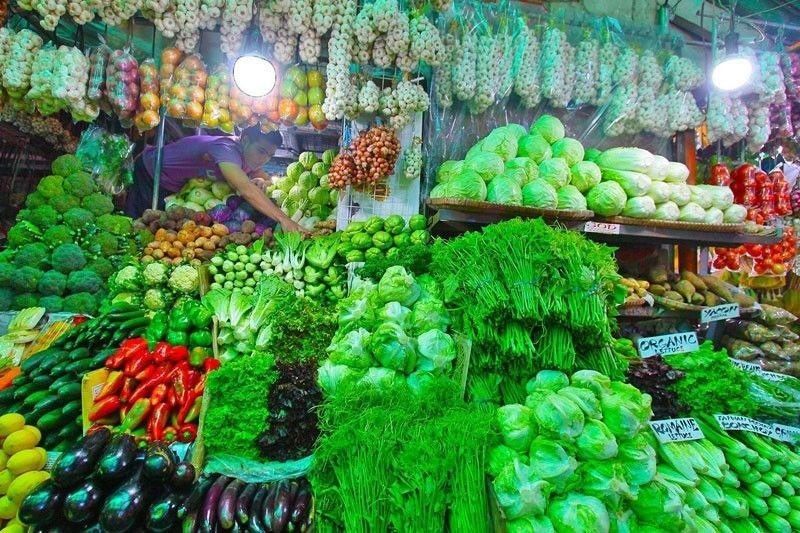Inflation hits 8-month high

Spikes to 2.9% in January
MANILA, Philippines — Consumer prices continued to accelerate in January, growing by an eight-month high of 2.9 percent, as faster increases were seen in the indexes of transport, alcoholic beverages and tobacco, as well as housing and utilities, the Philippine Statistics Authority (PSA) said yesterday.
In its report, PSA said headline inflation in January rose steadily from 1.3 percent in November and 2.5 percent in December but is still lower compared to the 4.4 percent in January 2019.
Seasonal growth in the transport index – which accelerated by three percent in January from 2.2 percent in December – was driven by fuels for transport as well as ship fares – as more people travel back to cities to return to work after the holidays.
“Our expectation is that this will slow down in the coming months but normally, we see a spike for this during holidays and just after the holidays when our citizens are going back to work,” said PSA chief Dennis Mapa.
Faster growth was also seen in the heavily weighted food and non-alcoholic beverages index to 2.2 percent in January from 1.7 percent in December as higher prices prevailed for chicken, fish, vegetables and meat due to the supply disruption caused by the explosion of Taal Volcano in Batangas as well as the continued substitution for pork amid the prevalence of African swine fever (ASF).
Chicken prices were up by 18 percent year-on-year in January while beef prices were 3.5 percent higher year-on-year. Fish prices were up by eight percent. Pork prices, meanwhile, declined by four percent.
“Right now, we are more concerned with the food products because of the ASF so we are tracking fish in the food basket in particular. Fish has a relatively higher inflation past eight percent, also vegetables, beef and chicken,” said Mapa.
Consumer prices in the National Capital Region (NCR) grew at a slower pace of 2.7 percent in January from 2.8 percent in December because of slower growth in the prices of food and non-alcoholic beverages particularly for corn, rice and sugar.
Rice prices declined by 6.5 percent in January, marking the ninth month of negative growth for prices of the staple.
Inflation in areas outside NCR (AONCR), however, rose at a faster pace of three percent in January from 2.4 percent in December, with the highest growth of 3.9 percent seen in Bicol Region. With the exception of Cordillera Autonomous Region (CAR), all regions outside NCR saw faster growth in consumer prices.
Preliminary results for inflation for the bottom 30 percent income showed that consumer prices for the country’s poorest households grew at a faster pace of 2.6 percent in January from 2.1 percent in December.
While the outbreak of the novel coronavirus is putting pressure on the supply and prices of certain healthcare products like face masks and alcohol-based sanitizers as well as vitamin supplements, PSA data show that these products belong to lightweight indexes that do not have much bearing on the headline rate.
Several indexes are also expected to register a downtrend in the coming months as consumption takes a hit because of weaker tourism and general aversion of crowded public places such as malls for fear of contracting the virus.
Among the indexes expected to be dragged down by the outbreak include Restaurant and Miscellaneous Goods and Services which already registered weaker growth in January coming from December as the holiday season comes to an end.
Mapa noted, that the end of the holidays combined with the choice of most to limit going out may cause less demand for goods and services covered by this index.
“What we observed so far is the inflation rate for restaurant and miscellaneous goods and services went down and most of these actually are meals eaten outside the home. So that might be the one that would be affected so we are tracking it.”
Transportation prices may also fall as the public avoid unnecessary travel.
The National Economic and Development Authority said the government remains vigilant as upside risks to inflation have emerged from several unexpected phenomena.
“Despite the relatively stable inflation outlook, we cannot be complacent, as the balance of risks remains on the upside for 2020 due to the effects of the Taal Volcano eruption, spread of African swine fever, and novel coronavirus (2019-nCoV),” said Socio economic Planning secretary Ernesto Pernia.
- Latest
- Trending

























